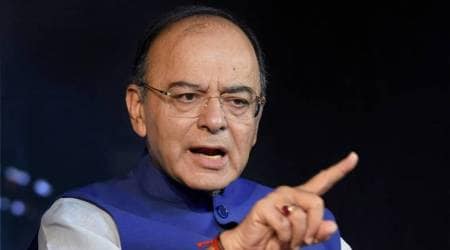 Her photographs have now come to India to mark India’s 70th year of Independence and are on display in her exhibition “In the Shadow of the Pyramid”. Express photo by Amit Mehra
Her photographs have now come to India to mark India’s 70th year of Independence and are on display in her exhibition “In the Shadow of the Pyramid”. Express photo by Amit Mehra
In 18 days, a 30-year-old regime crumbled under the weight of its people’s protest. The January 25 Egyptian Revolution would turn the world’s eyes on Cairo’s Tahrir Square, where protestors of President Hosni Mubarak called for ‘bread, freedom, and social justice’. Egyptian photographer Laura El-Tantawy, 37, captured the exhilaration, the irony, the theatre, and the confusion of people on those restless days. Her photographs have now come to India to mark India’s 70th year of Independence and are on display in her exhibition “In the Shadow of the Pyramid”. The show has been organised by Art Heritage, Delhi, and El-Tantawy has co-curated the show with Rahaab Allana, presenting the Revolution’s jagged experience through wall murals, audio-visual clips and her photographs that are political and poetic all at once. In them are portraits of people, of crowds, faces of hope, of faith, of pride; there are ghost figures standing in the street light watching the protest; of blood, toil, tears and sweat. Divided into three parts — ‘Time of Mubarak’, ‘Tahrir Square’, ‘Post Mubarak’ — it shows El-Tantawy’s journey, from her childhood to days of despair, finding dreams to feeling the fire of hate and loss. Excerpts:
You were born in England, and lived in Saudi Arabia, Egypt and America. How have these experiences nourished your work?
I started my career as a photojournalist. I invest emotionally in my work, and also take a lot of emotion from whom I photograph. There are places that I understand better than others and that understanding gives me access to photograph. I had lived outside Egypt for nearly two decades, but being an outsider, and coming back and seeing things from a different perspective, gave me the excuse to go into a space that I didn’t understand.
Your photos are largely political.
In Egypt, there is no separation between the political and the normal. I knew I was documenting something historical, not necessarily political. Of course, politics is in the background. I turned my camera on people to capture the atmosphere, and my own confusion, and my sense of fear. Those days were like a roller-coaster ride — there was sadness, slogans, people fighting, and singing. I saw a sense of unity that I had never seen before. In Egypt people really struggle to survive. With the Revolution, suddenly there was no difference. People from all social spectrums — politicians, engineers, lawyers, farmers, school teachers, bankers — were all standing together. I realised I could come back to this, that a collective spirit can change things.
But when you came back, Egypt was never the same.
I think before that there was staleness, not just politically, but socially. People were in the well of despair. But after January 25, they had the confidence. Tahrir Square felt like a really big home and a really big family, and in each room something different was happening. It was the idea of an Egypt that had the potential to exist. I met a young man from the village who told his family he might never see them again. He would wait in Tahrir Square till Mubarak left. Then there was a couple with their two small children who came because the father wanted to show them how people can bring about change. For people outside Egypt, the Revolution may seem like a failure, because now, it feels like nothing much has changed. Our activists are in prison and Mubarak is out. But I feel the Revolution is a work in progress.
Your photos are full of colour, in fiery orange and passionate reds. Is it a conscious choice?
When I think of Egypt, it’s red, because red is fire, there is a sense of urgency, it’s home. It pulls you despite all the conflict, and for me that is a natural way of seeing Egypt. And revolution is red, it’s red in every way, it’s red when it’s good and it’s red when it’s bad. I see life in colour.
The street seems to be the protagonist in your photographs.
I’ve always identified myself as a street photographer. I enjoy the symphony you find on the streets, the chaos. In my life I want to control everything. But photography helps me to be patient. I can’t control time or people, and I have to wait. I’m normally not good at waiting.
Tell us about your project in India.
I began shooting the epidemic of farmer suicides in Maharashtra in 2008. I’ve made several trips after that. And now I’m taking the project to other countries, not looking at suicides but the disparity between man and land. I began in Egypt because my own grandfather was a farmer, and working as a farmer eventually killed him. When Gamal Abdel Nasser was President, farmers had to give away half their land. It wasn’t viable for my grandfather, and he couldn’t survive financially, so there is always a connection to the work I do. But I have a second job as a TV producer, that’s how I fund these personal projects.

